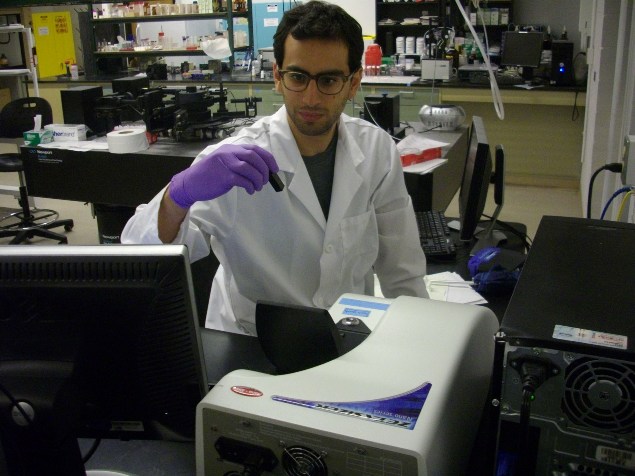Researchers at the Georgia Institute of Technology School of Chemical & Biomolecular Engineering (Georgia, US) are using the simple-to-use technique of dynamic light scattering (DLS) measurements to predict otherwise difficult-to-measure aggregation behaviors in proteins.

Using the Zetasizer Nano from Malvern Panalytical, the Georgia Tech team measures small volumes of stable protein solutions with low concentrations of different salts. From the results they can infer ion-specific trends in the kinetics of aggregation induced by much higher concentrations of the same salts. Such trends, derived from the analysis of non-aggregating samples, could be confirmed experimentally in rapidly aggregating samples of the same protein.
Associate Professor Sven Holger Behrens said, “We use the Malvern Panalytical Zetasizer DLS option in two ways in our protein studies. The first is a common approach and records the change in hydrodynamic radius [particle size] that occurs as proteins aggregate. Our second, more novel technique, is to look at non-aggregating protein solutions with the same types of salt-ions but much lower salt concentrations. These low salt solutions remain stable for as long as we look at them and we have found that protein interactions in these solutions, visible in DLS as a change in diffusivity [or apparent particle size] with protein concentration, correlate strongly with aggregation stability at much higher concentrations and can therefore predict ion-specific aggregation trends in proteins.”
“What makes the Malvern Panalytical Zetasizer nice is its user friendliness – it takes my students little time to familiarize themselves with this instrument. The fact that you can make these measurements in relatively small sample volumes, facilitated by cuvettes also supplied by Malvern Panalytical, is also very helpful, as is the instrument’s convenient temperature control.”
With co-authors Professor Andreas Bommarius and graduate students Jonathan Rubin and Adriana San Miguel, Professor Behrens published the results of his study titled ‘Correlating Aggregation Kinetics and Stationary Diffusion in Protein-Sodium Salt Systems Observed with Dynamic Light Scattering’ in the Journal of Physical Chemistry B [2010, 114, 4383–4387]. Malvern Panalytical’s Zetasizer series measures particle and molecular size from below one nanometer to several microns, zeta potential, electrophoretic mobility, and molecular weight. Further information is available at www.malvern.com/zetasizer
Malvern Panalytical, Malvern Panalytical and Zetasizer are registered trademarks of Malvern Panalytical
About Malvern Panalytical
Malvern Panalytical is a market leader in measuring performance controlling material properties. These include particle size, particle shape, zeta potential, molecular weight, size and conformation, rheological properties and chemical identification. Malvern Panalytical delivers the systems, support and expertise that ensure the analytical integrity and productivity needed to drive research, development and manufacturing.
Malvern Panalytical’s measurement solutions for scientists, technologists and engineers advance continually through customer collaboration. Complementary materials characterization systems deliver inter-related measurements that reflect the complexities of particulates and disperse systems, nanomaterials and macromolecules. Combining intelligently implemented technologies with in-depth industry applications knowledge and support, Malvern Panalytical provides customers with the competitive advantage they demand.
Headquartered in Malvern Panalytical, UK, Malvern Panalytical has subsidiary organizations in all major European markets, North America, China, Japan and Korea, a joint venture in India, a global distributor network and applications laboratories around the world. www.malvern.com